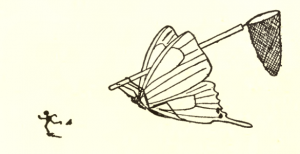
Title: Non-alcoholic fatty liver disease, diet and gut microbiota
What Caught Our Attention: The paper was co-authored by Carmine Finelli, who in the past took responsibility for a dramatic transgression: Stealing material from an unpublished manuscript by one of its reviewers. After the paper that stole from the manuscript was retracted in 2016, Finelli earned a second retraction earlier this year — again, for plagiarism. (He’s also lost another paper from Oncotarget, which was removed without any information.) Now, a fourth retraction has popped up, for using material “published previously.” Unsure of the source of this material, we Googled some of the phrases from the retracted article. While we cannot say for sure, we offer these comparisons for you — the reader — to consider:
From Non-alcoholic fatty liver disease, diet and gut microbiota, published 2014:
The rising incidence of obesity in today’s environment is associated with many obesity-related health complications, including cardiovascular disease, type 2 diabetes (T2D), hyperlipidemia, hypertension, and nonalcoholic fatty liver disease (NAFLD) (Tarantino et al., 2007; 2012; 2013; Finelli and Tarantino, 2013a). This constellation is also recognized as the metabolic syndrome and is characterized by underlying insulin resistance (IR). NAFLD or generally speaking hepatic steatosis (HS) is defined as the accumulation of lipid, primarily in the form of triacylglycerols in individuals who do not consume significant amounts of alcohol (< 20 g ethanol/d) and in whom other known causes of steatosis, such as certain drugs and toxins, have been excluded (Vuppalanchi and Chalasani, 2009).
From Comparative review of diets for the metabolic syndrome: implications for nonalcoholic fatty liver disease1–3 by Angela Zivkovic, J Bruce German, and Arun Sanyal; published 2007. We replaced the numeric in-text citations with author names:
The rising incidence of obesity in today’s environment is associated with many obesity-related health complications (Pi-Sunyer, 2002), including cardiovascular disease, diabetes, hyperlipidemia, hypertension, and nonalcoholic fatty liver disease (NAFLD) (Haynes et al., 2004; Abrams et al., 2004; Chan et al., 2004; Boza et al., 2005). This constellation is also recognized as the metabolic syndrome and is characterized by underlying insulin resistance. NAFLD is defined as the accumulation of lipid, primarily in the form of triacylglycerols in individuals who do not consume significant amounts of alcohol (<20 g ethanol/d) and in whom other known causes of steatosis, such as certain drugs and toxins, have been excluded (McCullough, 2004).
Journal: EXCLI Journal
Authors: Carmine Finelli and Giovanni Tarantino
Affiliations: Stella Maris Mediterraneum Foundation, Potenza, Italy; Federico II University Medical School of Naples, Italy; National Cancer Institute “Foundation G. Pascale”, Italy;
Dear editor,
As corresponding author I ask for retraction of our article Finelli and Tarantino, 2014, EXCLI J 2014;13: 461 because parts of it have been published previously. Both authors agree to this retraction. The authors apologize for any inconvenience to the scientific community.
Giovanni Tarantino
Date of Article: May 2014
Times Cited, according to Clarivate Analytics’ Web of Science: 8
Date of Notice: October 18, 2017
Hat tip: David Bimler
Like Retraction Watch? Consider making a tax-deductible contribution to support our growth. You can also follow us on Twitter, like us on Facebook, add us to your RSS reader, sign up on our homepage for an email every time there’s a new post, or subscribe to our daily digest. Click here to review our Comments Policy. For a sneak peek at what we’re working on, click here. If you have comments or feedback, you can reach us at [email protected].